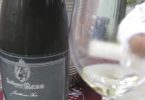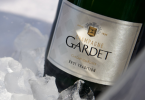Taste it, smell it, hear it, see it – the most thrilling live show in Barcelona is the city’s vast Boqueria food market, says John Carlin. It’s a feast for all the senses.
A visit to the market of la Boqueria in Barcelona is advisable to enjoy an incredible contrast between colours and activity, ideal to discover why Mediterranean cuisine is internationally known due to its ingredients. The best products from Catalonia in one place. La Boquería is Europe’s finest market located in the heart of Barcelona, on the Rambla, the name the Catalans give to a street that heads down to the sea. The guide who took me on this gastronomic tour was Isidre Giron, the owner of the top-notch restaurant “Ca L’Isidre” (“Chez Isidre” in Catalan).
We meet early at “Bar Pinotxo”, where Isidre always starts his morning ritual with a cortado coffee – espresso ‘cut’ with a dash of hot milk. “Pinotxo” is one of half a dozen spots inside the market where you can eat the produce that’s sold in it. A long, narrow bar, the size of half a dozen baths placed end to end, it has a permanent staff of five shockingly busy people. One of them cooks (the courgette omelette with chorizo looked delicious, but perhaps not for breakfast), three serve and one washes up. Juanito, the head barman and owner of the place for the last 50 years, is one of the great characters of the market, says Isidre…
‘Three kilos of habitas (baby broad beans), a sack of potatoes, a kilo of blackberries and two kilos of Gernika green peppers.’ I tell him I’ve never  heard of Gernika green peppers. He says they are quite rare, but finer than the better-known green peppers of Padrón, ‘fatter, longer, just as tasty and never hot’. (The Spanish usually don’t, but those who do like it hot are advised, if they haven’t already, to order a plate of fried pimientos de Padrón next time they are in Spain.) The fruit and veg stall, like its 56 competitors at la Boquería, is an arresting little work of art. The strawberries, for example, are arranged in the sort of rchitectural pattern that Gaudí favoured: the surreal kept somehow under geometrical control. Figs, papayas, chirimoyas, mangoes, pitayas – fruits plundered from the whole of creation – merge with lettuces of every shade of green to achieve the riotous kind of effect the paintings at the Museum of Modern Art, just around the corner, may hope to emulate, but never improve. La Boquería is at least as indispensable a stop on the Barcelona tourist itinerary as the Sagrada Familia, the Picasso Museum or (best of all) the church of Santa María del Mar, because it satisfies all of the senses, not just the eyes. You can smell, taste, touch and hear la Boquería. It is live theatre all day long – everybody, absolutely everybody, on the market’s 332 stalls is as busy as the “Bar Pinotxo” bunch – on a stage the size of two football pitches.
heard of Gernika green peppers. He says they are quite rare, but finer than the better-known green peppers of Padrón, ‘fatter, longer, just as tasty and never hot’. (The Spanish usually don’t, but those who do like it hot are advised, if they haven’t already, to order a plate of fried pimientos de Padrón next time they are in Spain.) The fruit and veg stall, like its 56 competitors at la Boquería, is an arresting little work of art. The strawberries, for example, are arranged in the sort of rchitectural pattern that Gaudí favoured: the surreal kept somehow under geometrical control. Figs, papayas, chirimoyas, mangoes, pitayas – fruits plundered from the whole of creation – merge with lettuces of every shade of green to achieve the riotous kind of effect the paintings at the Museum of Modern Art, just around the corner, may hope to emulate, but never improve. La Boquería is at least as indispensable a stop on the Barcelona tourist itinerary as the Sagrada Familia, the Picasso Museum or (best of all) the church of Santa María del Mar, because it satisfies all of the senses, not just the eyes. You can smell, taste, touch and hear la Boquería. It is live theatre all day long – everybody, absolutely everybody, on the market’s 332 stalls is as busy as the “Bar Pinotxo” bunch – on a stage the size of two football pitches.
Isidre sails off towards the stall that specialises in poultry and rabbit but pauses, abruptly, as if turned to stone, mesmerised by the spectacle of what looks to me like a not particularly prepossessing box of tomatoes. ‘Tomates de raf!’ he exclaims. ‘The best tomatoes in the world!’ They’re pretty green, most of them, large and crinklecut. ‘That’s what they’re supposed to look like, and feel how hard they are.’ They are hard. ‘That’s right. Hard. Packed with taste.’ He orders a kilo and while the stuff he bought at the first stall would be delivered straight to his restaurant, these he took himself, like precious treasure, in a plastic bag.
He buys two kilos of chicken wings and nine rabbits – ‘carcasses’ – before taking off on a quick spin, purely on my behalf because he is not making any purchases there today, passing, first, the man with the biggest game business in Barcelona – deer, pheasant, hare, quail, wild boar – who also does a nice line in vacuum-packed duck liver paté and, sold in plastic packets, chicken’s crests. ‘Good in soup,’ Isidre explains. Then we stop off for a chat with a lady called Rosa who runs “Despojos Rosa”.
The dictionary translation of despojos is ‘waste, scraps, leftovers’. What Rosa sells are sheep’s heads, brains, intestines, stomach linings, pig’s feet, and big, white, oval, veined bulls’ testicles. She also has, arrayed in another interesting architectural shape on a tray, what look like a pile of small, dusty, dark red bricks. ‘Coagulated blood,’ Rosa explains. ‘Great with fried onions.’ ‘Lots of fried onions,’ adds Isidre. ‘Lots.’
It is a little-known fact that Spain has the widest range of farm produce in the EU. Something to do, presumably, with the fact that Spain has the widest geographical range. From the deserts of Almería (in whose giant, plastic greenhouses everything grows) to the lush green of Galicia; from the Pyrénées to the Canaries. Spain is also, by miles, the world’s biggest producer of olives. A third of what passes for Italian olive oil actually originates in the vast olive groves of Andalucía.







